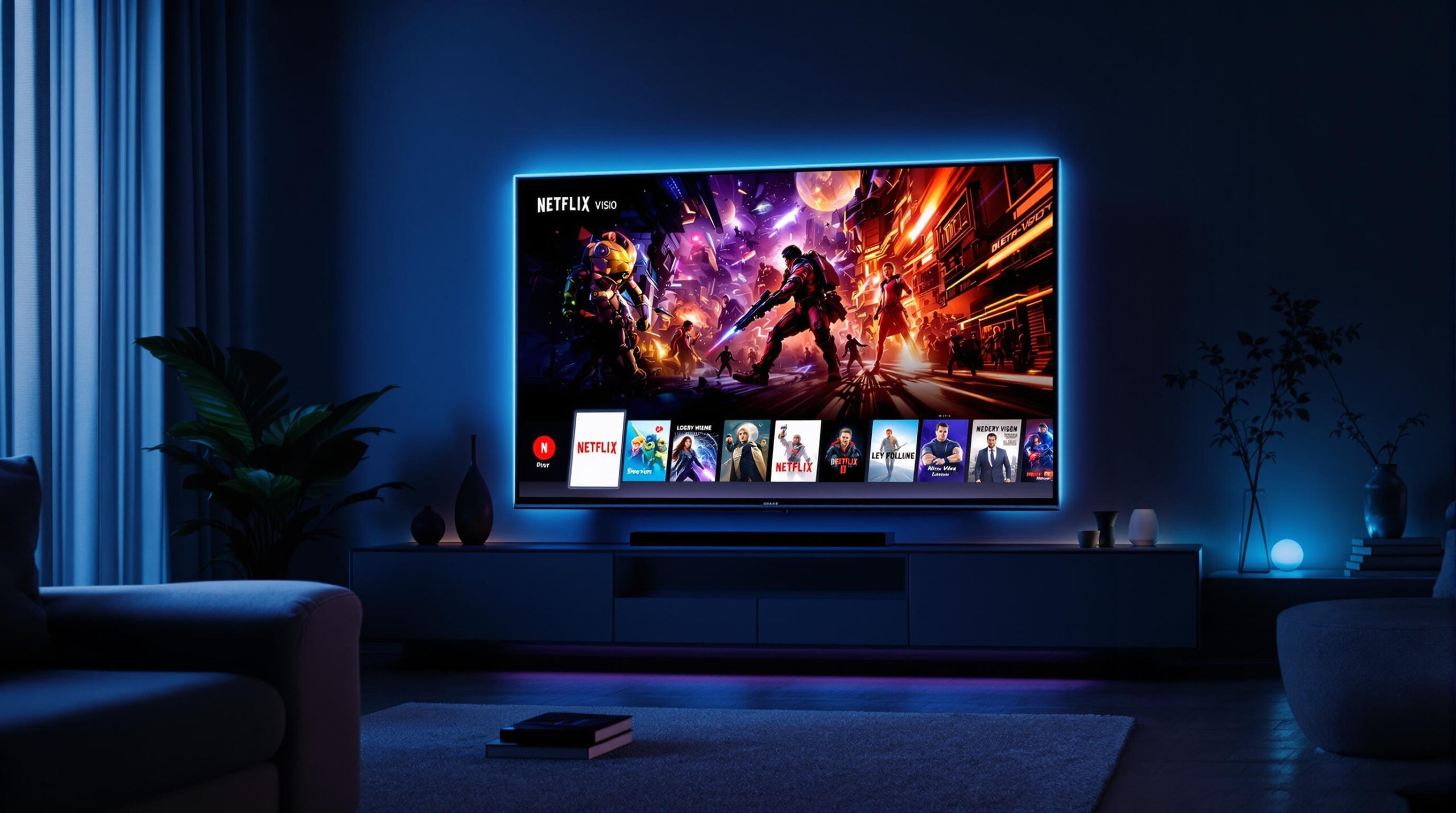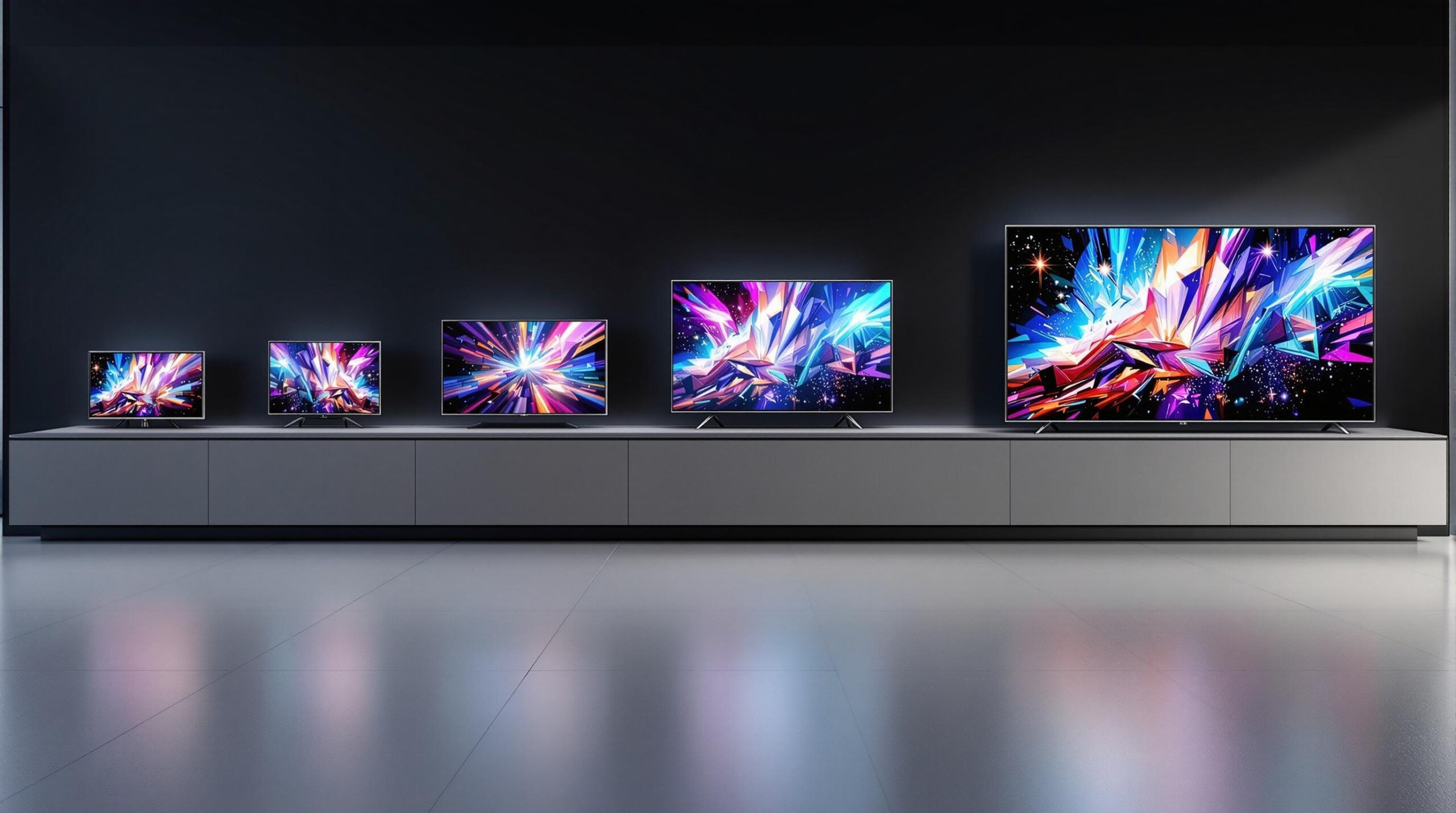Introduction: Why Streaming Deserves a Brilliant Screen
In the golden age of content, streaming platforms like Netflix and YouTube have revolutionized how and what we watch. Whether it’s cinematic masterpieces, viral documentaries, 4K travel vlogs, or HDR originals shot on RED cameras, viewers now demand picture quality that mirrors the magic of the content itself. The question is no longer what to watch, but what to watch it on. And in 2025, the best LED TVs for streaming services offer a transformative experience—blending affordability with visual finesse and smart functionality to deliver immersive entertainment that rivals a night at the theater.
LED TVs have evolved dramatically. With innovations like Mini-LED backlighting, Quantum Dot color enhancement, high refresh rate panels, and intelligent upscaling engines, today’s top LED TVs provide spectacular image quality, fluid motion, and exceptional brightness. These features matter more than ever for streaming platforms, where dynamic range, color accuracy, and native 4K resolution dominate the landscape. Whether you’re bingeing atmospheric dramas in Dolby Vision or catching fast-paced 60fps gaming videos on YouTube, the right LED TV can enhance every pixel and frame.
This article explores the best LED TVs for Netflix and YouTube in 2025, revealing how science-driven engineering, intuitive smart platforms, and next-gen features combine to deliver a streaming experience that is vivid, fluid, and unforgettable
Picture Quality: The Heart of a Streaming Powerhouse
Streaming today is about more than just resolution—it’s about clarity, realism, and depth. Netflix Originals often arrive in Dolby Vision or HDR10, pushing the boundaries of color and contrast. YouTube content creators regularly upload in 4K60 with high bitrates, ultra-smooth motion, and drone-captured vistas that demand high luminance and fine motion control.
The best LED TVs for this content use Mini-LED backlighting and Full Array Local Dimming to improve shadow detail and manage screen-wide brightness. For example, the Samsung QN90D features over a thousand dimming zones, enabling high-contrast scenes in Netflix dramas like Stranger Things or The Witcher to reveal nuanced black levels without blooming or washout. With peak brightness over 2,000 nits, this display allows HDR titles to shimmer with life, even in a daylight-filled room.
Motion clarity is equally vital. Many YouTube videos and nature documentaries are shot in 60fps or higher. TVs like the TCL QM8 and Hisense U8N offer native 120Hz panels that make fast pans buttery smooth. This is essential when watching YouTube creators like Peter McKinnon or MKBHD, where drone footage, product showcases, and real-time sequences need responsive and blur-free motion.
Coupled with 4K resolution and advanced processors, these panels don’t just display content—they sculpt it in real-time. Every hair strand, raindrop, and frame transition is handled with meticulous care, creating an experience where the line between virtual and real begins to blur.
Color Accuracy and HDR: Essential for Modern Storytelling
Color is storytelling. From the cold blues of a Scandinavian thriller to the warm golds of a sunlit beach in a travel vlog, the emotional tone of a scene is often carried through hue, saturation, and luminance. LED TVs that excel in streaming embrace this with Quantum Dot technology and multi-format HDR support.
Quantum Dots, used in models like the Samsung Q80D and TCL Q7, offer superior spectral purity by converting blue LED light into richly saturated reds and greens. This widens the color gamut and boosts color volume—ensuring that HDR content on Netflix, particularly Dolby Vision titles, looks as intended by the filmmakers.
HDR formats matter, too. The best LED TVs for streaming support Dolby Vision, HDR10+, and HLG, giving users the full range of brightness mapping and dynamic metadata decoding. This means that every frame adjusts in real time to preserve detail in both the darkest and brightest portions of the screen. When watching content like Our Planet II or The Crown, you’ll notice vibrant nature scenes, intricate costume details, and cinematic lighting that breathe authenticity into every frame.
In the YouTube ecosystem, where creators increasingly shoot in HDR with mirrorless and RED cameras, the right LED panel reproduces this footage with punchy highlights, balanced skin tones, and neutral whites. The combination of advanced color science and hardware-backed HDR decoding ensures that the TV doesn’t just display the video—it elevates it.
Smart TV Platforms: The Gateway to Netflix and YouTube
No discussion about the best LED TVs for streaming is complete without addressing the operating system. Streaming hinges on a fast, fluid, and content-rich smart TV interface that puts Netflix and YouTube front and center—with no lag, no confusing menus, and no compatibility issues.
In 2025, Google TV, Tizen, webOS, and Fire TV lead the charge in offering robust streaming environments. The Hisense U8N, for instance, runs Google TV and provides instant access to Netflix, YouTube, and an endless catalog of niche streaming apps. Its UI is snappy, searchable by voice, and powered by personalized content recommendations.
Samsung’s Tizen OS, featured in the QN90D and Q80D models, boasts an ultra-polished layout with Samsung’s own Smart Hub integration. It provides multi-tasking capabilities, screen mirroring, voice assistant compatibility (Google Assistant, Alexa, Bixby), and seamless app support for 4K and HDR content from Netflix and YouTube.
LG’s webOS, especially in the QNED90T, continues to shine with fast app switching, a customizable dashboard, and AI-driven content discovery. Built-in features like hands-free voice recognition and AirPlay 2 integration make streaming more fluid and personalized.
All these systems support auto-login for major apps, instant boot, and hands-free voice search, ensuring that getting from couch to content takes seconds—not minutes. Streaming is meant to be intuitive, and these top-tier LED TVs deliver just that.
Upscaling and AI Optimization: When Internet Quality Fluctuates
Streaming is rarely a perfect science. Bitrates fluctuate. Connections drop. Compression artifacts sneak in. This is where the best LED TVs flex their AI-enhanced video processors—systems designed to upscale, sharpen, denoise, and reconstruct 4K visuals from less-than-ideal source feeds.
Samsung’s Neural Quantum Processor 4K is a marvel of upscaling. Using machine-learned algorithms and real-time scene recognition, it rebuilds textures, contours, and depth even from HD content. YouTube videos shot in 1080p look convincingly close to native 4K, while older Netflix shows benefit from cleaner lines and smoother gradients.
LG’s Alpha 9 AI Processor Gen 7 in the QNED series similarly analyzes both input source and room lighting, applying dynamic tone mapping and noise reduction for optimal clarity. The result is that even standard definition content appears richer and more detailed, especially on large screens where resolution gaps become more noticeable.
Hisense and TCL have followed suit with Hi-View Engine Pro and AiPQ Processor Gen 3, which perform real-time scene detection and adjust backlight behavior, motion smoothing, and color saturation dynamically. This is invaluable when streaming lower-bitrate or user-generated content on YouTube, where quality varies from creator to creator.
With these intelligent processors, the TV becomes more than a display—it becomes an image enhancement system, capable of transforming ordinary streams into extraordinary visuals.
Audio Experience: The Often Overlooked Immersion Factor
While the picture quality draws you in, sound completes the experience. A great Netflix thriller loses impact without dynamic surround cues; a cinematic travel vlog on YouTube feels hollow without immersive ambiance. That’s why the best LED TVs for streaming also bring upgraded audio systems and object-based sound decoding.
Top-tier models like the Samsung QN90D and LG QNED90T support Dolby Atmos, creating a 3D soundscape that envelopes the viewer. These TVs often include upward-firing speakers and AI-calibrated tuning to match room acoustics. The dialogue remains crisp even in loud action scenes, and spatial audio makes you feel inside the story.
Even TVs with more basic speaker setups, such as the TCL Q7, incorporate virtual surround processing and AI voice amplification to enhance vocal clarity in documentaries or YouTube interviews. When paired with a compatible soundbar over HDMI eARC, these TVs unlock full high-bitrate audio formats—preserving every detail in high-fidelity Netflix and YouTube streams.
Audio may not be the headline spec, but in the streaming age, it’s a critical component of total immersion—and these LED TVs deliver.
Gaming and Streaming: A Crossover Built into Modern TVs
An unexpected perk of buying a high-performance LED TV for streaming is its prowess in gaming. With Netflix and YouTube both pushing interactive content and cloud gaming integration, the lines between streaming and gaming have blurred.
TVs like the Hisense U8N and TCL QM8 come with Game Mode Pro, enabling ALLM, VRR, and low input lag—critical for services like NVIDIA GeForce NOW or Xbox Cloud Gaming. YouTube’s growing catalog of gaming content also benefits, as frame-perfect footage and fast camera movement remain clear and judder-free.
This crossover appeal makes these LED TVs future-ready. As platforms experiment with choose-your-own-adventure content, interactive narratives, and gameplay-first series, your streaming TV will already be optimized to support the evolution of visual entertainment.
Energy Efficiency, Design, and Longevity: Practical Considerations for Streamers
Modern LED TVs have also improved in energy consumption and thermal management. Quantum Dot and Mini-LED technologies are inherently more efficient than traditional CCFL backlighting, and many 2025 models are ENERGY STAR certified.
Design-wise, the best TVs for streaming are minimalist yet expressive. The Samsung Frame LS03D, for example, offers high-end LED performance in a picture-frame aesthetic, ideal for content connoisseurs who want style and function in one package. Slim bezels, wall-mount options, and anti-glare coatings make modern LED TVs as elegant as the content they showcase.
Longevity is another strength. Unlike OLEDs, which can experience burn-in from static images like app logos or YouTube UIs, LED TVs are largely immune to such wear. For streamers who watch for hours on end, that’s a meaningful difference.
Conclusion: The Best LED TV for Streaming is Now a Premium Experience
The era of LED TVs as mere budget options is over. In 2025, the best LED TVs for Netflix and YouTube offer performance that touches the cinematic—bright Mini-LED backlights, quantum dot color purity, HDR mastery, 120Hz motion smoothness, AI video optimization, and immersive sound.
Streaming content has become more than a way to watch—it’s become a way to live stories, learn, travel, game, and grow. And the right LED TV doesn’t just enable that; it enhances it at every level. From YouTube creators capturing the world in 4K HDR to Netflix auteurs crafting episodic brilliance, these TVs are built to do justice to the medium.
So whether you’re curled up for a series binge or watching a creator’s latest upload, the best LED TVs of 2025 ensure that every pixel, every color, and every moment is seen and heard exactly as it was intended—brilliantly.
LED/LCD TV Reviews
Explore Philo Street’s Top 10 Best LED/LCD TV Reviews! Dive into our comprehensive analysis of the leading OLED TV products, complete with a detailed side-by-side comparison chart to help you choose the perfect protection for your devices.




